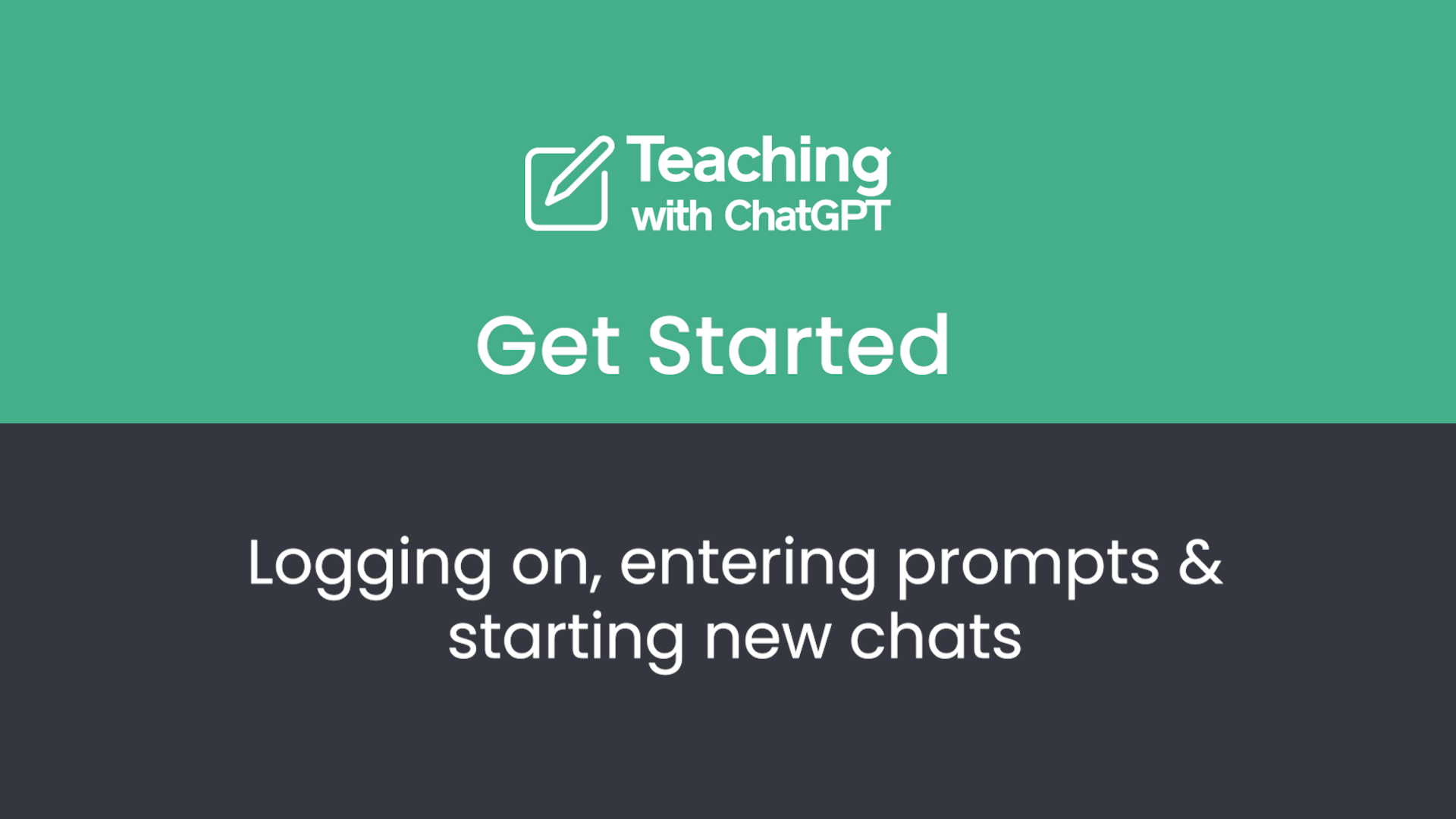
Get started with ChatGPT.
Teachers want to use ChatGPT, but there is limited hands-on guidance on how and for what.
We have built this guide with AI experts and over 40 teachers and tutors across England, to show where ChatGPT can be most useful and how to get the best out of it.
What is ChatGPT and how can it help you?
-
ChatGPT is a chatbot which can generate human-like text by predicting the next word in a sequence, based on its experience of a huge database of internet text.
ChatGPT is a generative AI tool developed by OpenAI. It gives users the ability to interact with the GPT language models (computer models which can understand and generate human language) of OpenAI, using these models to predict the next word in a given sequence.
This guide was developed using Chat GPT 3.5 and GPT-4, which is now available for free. GPT-4 has enhanced capabilities including more powerful mathematical and language capabilities, greater ability to process inputs from multiple sources, and the ability to process multimodal inputs (text and images).
-
ChatGPT can be very useful for performing a range of writing-based tasks, such as creating written content and suggesting answers to questions.
In teaching, this might include coming up with practice questions, new examples, activity ideas, and more. -
Do not share sensitive or personal information with ChatGPT; always check your school’s usage policies when using AI tools.
ChatGPT can make mistakes, particularly in calculation-based subjects such as maths, as well as when answering factual questions where the answer lies outside of the data it has been trained on. The model is most powerful when working in English; it can struggle with certain other languages.
It is important to check responses carefully and correct inaccurate or inappropriate content.
OpenAI’s website states the following about biases:
“ChatGPT is not free from biases and stereotypes, so users and educators should carefully review its content. It is important to critically assess any content that could teach or reinforce biases or stereotypes. The model is skewed towards Western views and performs best in English. Some steps to prevent harmful content have only been tested in English.
The model's dialogue nature can reinforce a user's biases over the course of interaction. For example, the model may agree with a user's strong opinion on a political issue, reinforcing their belief.
These biases can harm students if not considered when using the model for student feedback. For instance, it may unfairly judge students learning English as a second language.”
You can read more on the OpenAI website here.
-
You can access ChatGPT here. The video above will walk you through how to get set up - follow the button under the video to see more ways you can use ChatGPT.
-
As of September 2024, ChatGPT is free to use.

